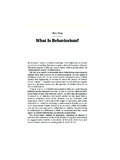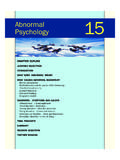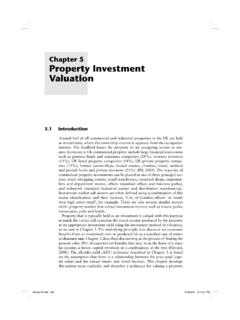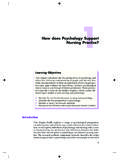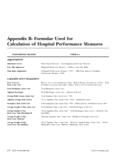Transcription of The Multinational Corporation - Wiley-Blackwell
1 THE Multinational CORPORATION7chapter1 The Multinational CorporationPurposeThe purpose of this chapter is to define the Multinational Corporation (MNC)and outline its major characteristics and challenges. Various strategies for enteringthe international arena are delineated. The focus of this book will be on equitymodes of entry involving fully owned subsidiaries. First, we paint a broad pictureof the globalization of business, the significance of the triad economies and theissue of national Globalization of BusinessThe phenomenon of MNCs has been ascribed to a combination of two mainfactors: the uneven geographical distribution of factor endowments and marketfailure (Dunning, 1988). That is, because of their national origins, some firms haveassets that are superior to those in many other countries. Moreover, a substantialproportion of these firms have concluded that they can only successfully exploitthese assets by transferring them across national boundaries within their ownorganizations rather than by selling their right of use to foreign-based recently, nationally endowed assets have been supplemented by MNCsacquiring, developing and integrating strategically important assets located inother countries, thereby making their national origins somewhat less date, this combination of unequally distributed factor endowmentscombined with difficulties in using market-based arrangements has yielded morethan 60,000 MNCs with over 800,000 affiliates abroad.
2 On a global basis, MNCsgenerate about half of the world s industrial output and account for abouttwo-thirds of world trade. About one-third of total trade (or half of the MNCtrade) is intra-firm. MNCs are particularly strong in motor vehicles, computersIMC0108/07/2003, 2:27 PM7 THE Multinational CORPORATION8 IrelandCanadaBritainFranceSwedenUnited StatesGermanyItalyJapan0 102030405060%70na19891996and soft drinks, having on a global basis 85 per cent, 70 per cent and 65 per centof these markets, respectively. In some countries they are the dominant manufac-turing presence. As figure shows, in 1996, affiliates of MNCs accounted fornearly 70 per cent of Ireland s manufacturing output, and over 50 per cent ofCanada s. A substantial proportion of manufacturing in Britain, France andSweden is also accounted for by MNCs. All the indications are that the level ofproduction undertaken by foreign-owned manufacturing will continue to example, by 1998 for the EU as a whole a quarter of total manufacturingproduction was controlled by a foreign subsidiary of an MNC compared to17 per cent in advantages of becoming a global player in manufacturing are more obvi-ous than for service-based firms.
3 In the case of the former, the value chain can bedivided across many locations. Parts of the manufacturing process can be locatedto low-cost countries, while R&D can be located in a region with specializedcompetencies with its costs spread across many markets. In the case of servicefirms, much of the value chain has to be generated locally: that is, there is little inthe way of opportunity to centralize activities to low-cost locations. To a greateror larger degree, services have to be tailored for each client unlike, for example,pharmaceuticals, which can be mass-produced. Sharing advanced knowledge isalso more problematic. In manufacturing companies it can be made availablethrough patented technologies or unique products. In service companies it has tobe transferred from country to country through learning processes. Neverthelesswith the liberalization of recent years, the share of services in foreign directinvestments (FDI) has risen significantly particularly within telecommunications,utilities, investment banking, business consulting, accountancy and legal of foreign affiliates in manufacturing outputSource: OECD The Economist Newspaper Ltd, London, 8 January, 2000 IMC0108/07/2003, 2:27 PM8 THE Multinational CORPORATION9 Financial servicesMining (including oil/gas)Retail/wholesale tradeProperty & business servicesChemicals and fuel productsTextile, wood, printing & publishingIT & communicationsElectricity, gas & waterFood productsMetal & mechanical productsHotels and restaurantsTransport equipment (including cars)0405 101520253035 Accenture, the management consultancy, for example, has a staff of 75,000 in47 countries and the accountancy PricewaterhouseCooper (PwC) has 160,000in 150 countries.
4 The emergence of new services, such as software, back-officeservices, call-centres and data entry, has also contributed to the relative growth ofservices in FDI. At the broad sectoral level, the share of services in FDI nowaccounts for about half of inward FDI stock in the Although Britain is byno means representative of developed economies in terms of spread of foreigndirect investment, figure nevertheless provides a useful indicator of the divers-ity of sectors within which MNCs setbacks such as the Asia crisis of the late 1990s, the long-term flowof foreign direct investment (FDI) is one of inexorable increase. The annualaverage FDI growth rate between 1986 and 2000 was 30 per cent or more for65 countries including Denmark, Finland, China, Germany and Finland. Another29 countries, including Austria, the Netherlands and Russia, had FDI growth ratesof 20 29 per cent. For 1999 and 2000 over three-quarters of global FDI inflowswent to the developed world partly because of intense cross-border mergers andacquisitions activity.
5 The major recipients at the end of the 1990s were the USAand the European Union (EU), with Germany, the United Kingdom and theBenelux countries figuring particularly strongly. Among developing countries China(including Hong Kong) was by far the most important recipient: nearly 400 ofthe Fortune 500 firms have invested in China to these recipient countries subsidiaries tend to cluster geographically inand around areas with well-developed infrastructures including suppliers, skillsand innovative capabilities. In the USA, California, New York, Texas, Illinois andNew Jersey are the main magnets; in Japan it is Tokyo, and in China it is thecoastal of foreign direct investment in Britain, end of 1997, bnSource: ONS The Economist Newspaper Ltd, London, 22 January, 2000 IMC0108/07/2003, 2:27 PM9 THE Multinational CORPORATION10 USEUJ apanCanadaSouth KoreaSwitzerlandChinaAustraliaBrazilMexi coNorwayRussiaIndiaMalaysiaSouth AfricaTaiwanVenezuela1791481071212111073 22211111 Source: Adapted from Fortune Magazine, The Fortune Global 500 24 July 2000 Country/block showing MNEs in 1999 Figure world s 500 largest MNCsSource: Rugman, 2001 Regional BoundariesThe triad economies, the EU, the USA and Japan, have long accounted for thebulk of global FDI.
6 As figure indicates, most MNCs are therefore from thetriad. Rugman s (2001) analysis indicates that of the world s largest 500 MNCs,a total of 434 are from the triad. This total has increased from 414 in 1990indicating the permanency of the triad hegemony. Together, the 434 triad MNCscurrently account for 90 per cent of the world s stock of FDI meaning thatdeveloped countries are the primary destinations for FDI. The 434 triad MNCscarry out half of all world trade, often in the form of intra-company sales betweensubsidiaries. However, it should be borne in mind that most of them first andforemost operate in a strong triad home base. In other words, much of the pro-duction, marketing and other business activities are organized by regional bound-aries rather than being truly global so that the bulk of FDI is concentrated withinregions and neighbouring regions. For North America there are strong FDIlinks with Latin America and the Caribbean, Japan with Asia, whereas for the EUlinks are strong within Western Europe with some recent strengthening withCentral and Eastern Europe.
7 Furthermore, MNCs generally have large portfoliosof purely domestic assets. Even the largest MNCs have on average nearly halfof their total assets in domestic assets whereas for many smaller MNCs theIMC0108/07/2003, 2:27 PM10 THE Multinational CORPORATION11proportion is substantially larger. Rugman (2001: 10) may be overstating his casesomewhat when he concludes that:There is no evidence for globalisation, that is, of a system of free trade with fullyintegrated world markets. Instead the evidence on the performance and activities ofmultinational enterprises demonstrates that international business is triad-based andtriad-related .. European, North American and Asian manufacturing and servicecompanies compete viciously for market share, lobbying their governments forshelter and , Rugman s perspective is a useful antidote to na ve notions of thegeographical scope of most MNCs, particularly smaller IdentityDespite the increase in globalization most MNCs have home bases that give themresolutely national identities.
8 General Electric and Microsoft are clearly Americanjust as Honda and Toyota are Japanese. Only one in five of the boards ofostensibly global US companies include a non-US national. Sixty per centof Honda s sales are outside Japan, but only 10 per cent of its shares are held bynon-Japanese. Toyota has 41 manufacturing subsidiaries in 24 countries but noforeign managers among its vice-presidents in Tokyo. Mergers and acquisitionshave little impact. Daimler-Chrysler, hailed in 1998 as a merger of equals, soonbecame a German company with German executives taking control of the USoperation while many of Chrysler s most senior executives either left or wereforced out. Even within Europe with its single market and single currency, pan-European companies, free of national demarcations, remain elusive. One typicalvariant is that pan-European ventures end up being dominated by one national-ity.
9 Thus Alstom, the transport and power engineering group, started out as aBritish-French joint venture but is now dominated by French executives, with theUK managers playing a junior role. The other typical variant is that managementstructures are specifically designed to take into account constituent national sens-itivities. For example, the European Aeronautic Defence and Space Company(EADS) formed in 2000 through a merger of Aerospatiale Matra of France andDaimler-Chrysler Aerospace of Germany with Casa of Spain as a junior partner,has two chairmen (one German and one French), two chief executives (ditto) andtwo headquarters (Munich and Paris).There are exceptions such as Royal Dutch/Shell and Unilever, two long-standing Anglo-Dutch groups with bi-national identities. But there are few com-panies with genuinely Multinational identities. The most obvious exceptions tendto be located within professional services.
10 The Boston Consulting Group has nowmore partners outside the USA and also generates two-thirds of its revenuesoutside the USA. However, these are nationally owned partnerships that confer aIMC0108/07/2003, 2:27 PM11 THE Multinational CORPORATION12degree of local independence. Outside professional services Multinational ident-ities are more elusive. However, because an increasing number of MNCs havemore employees outside their home base country, creating some inclusive corpor-ate identity is increasingly important in order to enhance knowledge flow fromsubsidiary to corporate headquarters. ABB, the Swedish-Swiss engineering con-glomerate, from its launch in 1988, has always insisted that it has no national axeto grind. It has a tiny corporate headquarters of only 100 employees in Zurich,an executive board comprising a variety of nationalities, and English as its work-ing language. Swedish Percy Barnevik, ABB s first chief executive, famouslyinsisted on fellow Swedes writing to him in English.



